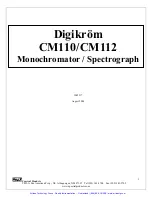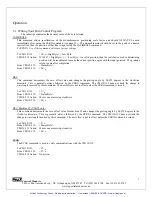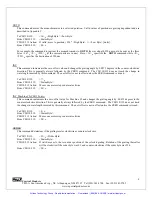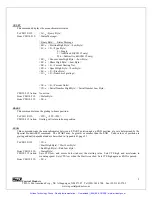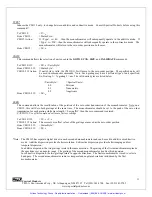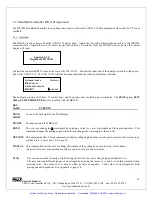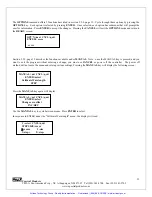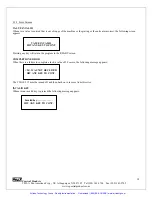
1.5 Theory of Operation
The optical path of monochromators is designed so that, for monochromatic light, an image of the entrance slit is formed
at the exit slit. Scanning the monochromator rotates the grating and moves this image across the exit slit. If one were to
measure the intensity of the light exiting the monochromator as this scanning occurs, one would see that a triangular intensity
profile results. This is shown in
Fig.1
below. Diffraction and other aberrations cause deviations from this ideal situation.
Fig.1 -
Formation of a spectral line
Because of the physics of diffraction gratings, entrance slit images are formed at a different angles for different
monochromatic wavelengths. Therefore, rotation the grating also selects a changing wavelength region. This is described by
the grating equation...
n
*
λ
= 2 * d * COS(
∅
) * SIN(
∅
)
This equation will be described in detail later.
Imagine a source that sends two monochromatic lines into a monchromator. If the wavelengths are sufficiently
different, the two monochromatic slit images will not overlap at the exit slit. However, the finite width of the slits allows the
possibility of overlap for some wavelength difference. That is, the slit width limits the ability to resolve two wavelengths.
Wider monchromator slits allow more light to enter into the instrument. Narrower slits allow for better resolution
between wavelengths. This is one of the basic trade-offs in the use of monochromators.
The wavelength that is passed by the monochromator, lambda, is described by the grating equation that was presented
earlier.
n
*
λ
[nm] = 2 * d * COS(
∅
) * SIN(
∅
)
Spectral Products
2659-A Pan American Frwy., NE Albuquerque, NM 87107 Tel (505) 343-9700 Fax (505) 343-9705
www.spectralproducts.com
4
Entrance image
Exit slit
No overlap
Half overlap
Full overlap
Half
overlap
No overlap
I
1
1/2
λ
λ
Artisan Technology Group - Quality Instrumentation ... Guaranteed | (888) 88-SOURCE | www.artisantg.com


